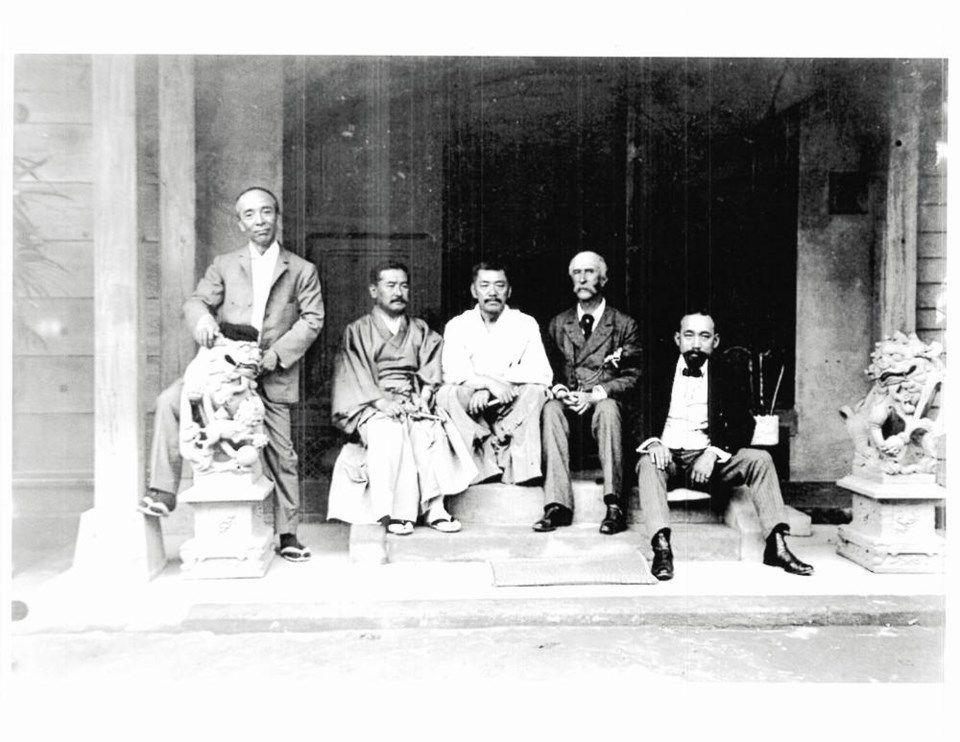The Royal B.C. Museum has identified one of the men in a set of mystery photos from its archives, thanks to clues from the public.
Museum staff had found the photos while cataloging items in the B.C. Archives prior to a planned move to a new state-of-the-art facility in Colwood.
“It was a conundrum that, through social media, we were able to solve,” said Dr. India Young, art historian and curator for art and images at the museum.
One of the five men in one of the pictures has been identified as Thomas Blake Glover, a Scottish merchant who moved to Nagasaki, Japan, in 1859 to manage the newly established office of a British trading house.
The photograph was likely taken at the Glover residence in Nagasaki, now a park and tourist attraction.
While the museum had long suspected that Glover was one of the figures in the photographs, it required further corroboration.
The museum has reached out to its counterparts in Japan to discern the identities of the other individuals in the picture. Glover was known to have worked closely with the founders of Mitsubishi, Yataro and Yanosuke Iwasaki, during his time in Nagasaki.
There is also solid evidence that the lion sculptures (known as komainu) seen in the photo are early precursors for the logo of Kirin Beer, which Glover also played a role in founding with the Iwasaki family.
The next steps include researching how the photos came to be on southern Vancouver Island and at the museum, where they were donated anonymously.
This is the first time the Royal B.C. Museum has turned to social media to solve a mystery about an object in its collection, although it’s not an uncommon practice for museums around the world.
“Other museums have successfully turned to social media as a way of pooling knowledge,” said Young, who oversees collections, paintings, prints, drawings and photographs in the B.C. Archives.
“We expect we will use social media again as a means to start conversations and share memories, especially if we can find a close link to British Columbia.”



